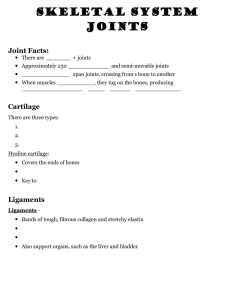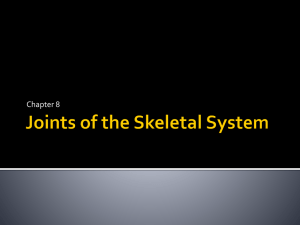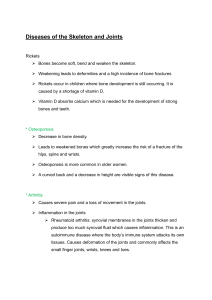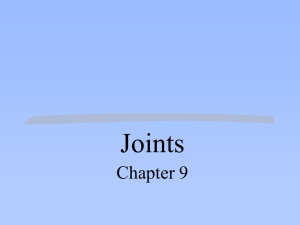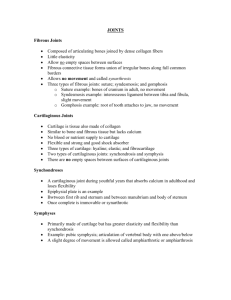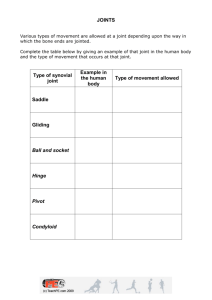Joint Structures & Types: Anatomy & Exercise
advertisement
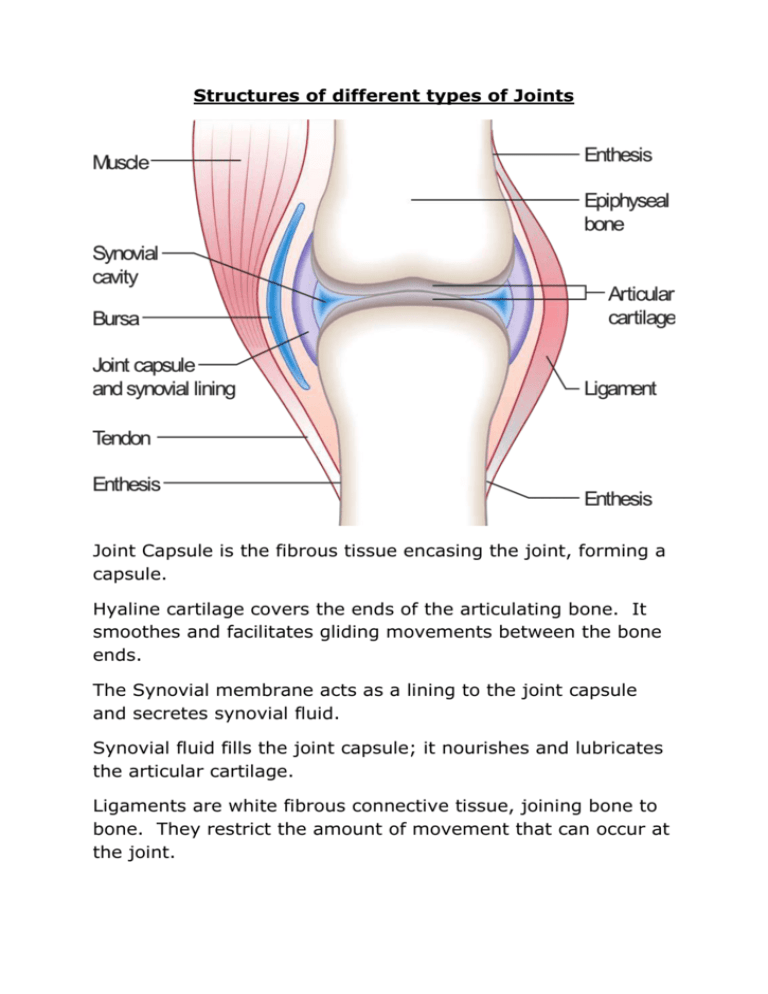
Structures of different types of Joints Joint Capsule is the fibrous tissue encasing the joint, forming a capsule. Hyaline cartilage covers the ends of the articulating bone. It smoothes and facilitates gliding movements between the bone ends. The Synovial membrane acts as a lining to the joint capsule and secretes synovial fluid. Synovial fluid fills the joint capsule; it nourishes and lubricates the articular cartilage. Ligaments are white fibrous connective tissue, joining bone to bone. They restrict the amount of movement that can occur at the joint. Pads of fat (Bursa) act as buffers to protect the bones from wear and tear. The hinge joint only allows movement in one way this is because of the shape of the bones and the strength of the ligaments which prevent movement from side to side. The knee and elbow are examples of this type of joint. Ball and socket joints are able to perform a range of movements, because it a cup shaped socket. The shoulder and hip are examples of ball and socket joints. The pivot joints allow only rotation. An example is the joint which allows us to turn our heads from side to side (between the atlas and axis vertebrae), and the joint, which allows us to turn our hand over. Gliding/Plate joints are able to slide or glide over each other but these are restricted because of the ligaments. These joints can be located within the carpals of the hand. (Small bones within the hand). The saddle joint has convex and concave surfaces that are placed against each other. This allows movement in two directions. An example is the joint at the base of the thumb. Range-of-motion exercises increase the amount of movement in a joint and muscle. Examples are yoga and tai chi, which focus on flexibility, balance, and proper breathing. Low-impact aerobic workouts help stabilize and support the joints. Cycling and walking are beneficial and swimming or exercising in water is highly recommended for people with arthritis.
